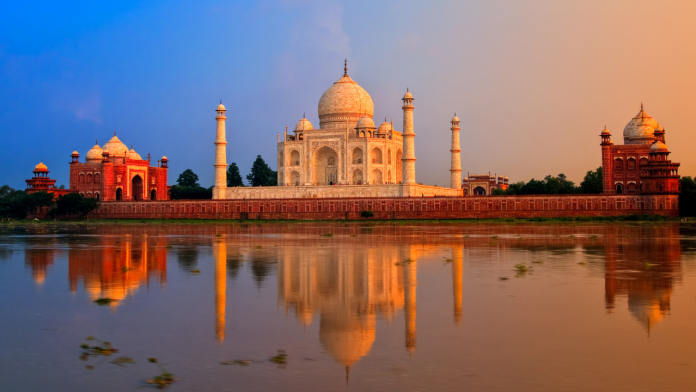Mughal architecture, a splendid blend of Persian and Indian styles, stands as a testament to India’s glorious history. This architectural marvel, with its intricate designs, opulent materials, and grand structures, showcases the legacy of the Mughal Empire that ruled the Indian subcontinent for centuries.
Historical Background
The Mughal Empire, which reigned over the Indian subcontinent from the early 16th to the mid-18th century, was known for its immense cultural contributions. The Mughals were descendants of Genghis Khan and Tamerlane and established themselves as one of the most influential dynasties in India. With the emperors like Akbar, Shah Jahan, and Aurangzeb, they not only expanded their empire but also left a remarkable impact on art and architecture.
Mughal Architecture’s Influences
Mughal architecture was heavily influenced by Persian, Timurid, and Indian architectural styles. Persian architectural elements, such as intricate geometric patterns and calligraphy, were combined with Indian construction techniques and aesthetics. This fusion resulted in a unique architectural style that still captivates the world.
Distinctive Features of Mughal Architecture
Intricate Geometric Patterns
One of the hallmarks of Mughal architecture is the extensive use of intricate geometric patterns in its designs. These patterns can be seen in the intricate carvings on walls, ceilings, and minarets of Mughal structures.
Use of Red Sandstone and White Marble
Mughal architecture often featured the use of red sandstone and white marble. The contrast between the two materials added to the visual appeal of the buildings. The Taj Mahal, for instance, is primarily constructed using white marble, giving it a stunning, ethereal appearance.
Persian and Indian Fusion
The Mughals seamlessly blended Persian and Indian architectural elements. Persian archways and domes were combined with Indian construction techniques to create buildings that were both aesthetically pleasing and structurally sound.
Ornate Archways and Domes
Mughal architecture is known for its ornate archways and domes. The intricate carvings and decorations on these architectural elements are a sight to behold.
Famous Mughal Monuments
Taj Mahal
The Taj Mahal, one of the most iconic structures in the world, is a masterpiece of Mughal architecture. Built by Emperor Shah Jahan in memory of his beloved wife Mumtaz Mahal, it’s a symbol of eternal love and devotion.
Red Fort
The Red Fort in Delhi is another remarkable example of Mughal architecture. It served as the main residence of Mughal emperors for nearly 200 years.
Fatehpur Sikri
Fatehpur Sikri is a well-preserved city and an outstanding specimen of Mughal architecture. It’s known for its stunning Buland Darwaza and Panch Mahal.
Jama Masjid
The Jama Masjid in Delhi is one of India’s largest mosques, featuring red sandstone and white marble, intricate carvings, and a large courtyard.
Humayun’s Tomb
Built in 1569-70, Humayun’s Tomb is another architectural marvel that inspired the design of the Taj Mahal. It’s the tomb of Emperor Humayun and is a UNESCO World Heritage Site.
Legacy of Mughal Architecture
The legacy of Mughal architecture continues to influence modern Indian construction and design. The use of intricate patterns, arches, and domes in contemporary structures pays homage to this rich heritage.
Mughal Architecture’s Impact on Modern India
Mughal architecture has left an indelible mark on modern India. The fusion of Persian and Indian styles is still celebrated in the construction of homes, buildings, and public spaces.
The Preservation and Restoration of Mughal Monuments
Efforts to preserve and restore Mughal monuments are ongoing. Various organizations and government initiatives are working diligently to ensure these historic sites continue to stand as a testament to India’s architectural prowess.
Conclusion
Mughal architecture is a treasure trove of history and art. Its fusion of Persian and Indian elements, the use of intricate patterns, and grand structures continue to enchant visitors from around the world. The Mughal architectural legacy lives on, not only in the iconic monuments but also in the very essence of modern Indian design and construction.
FAQs
1. What are the key features of Mughal architecture?
Mughal architecture is characterized by the use of intricate geometric patterns, the combination of red sandstone and white marble, fusion of Persian and Indian styles, and ornate archways and domes.
2. Which Mughal monument is the most famous?
The Taj Mahal, built by Emperor Shah Jahan, is the most famous Mughal monument, known for its exquisite beauty and romantic significance.
3. How did Mughal architecture influence modern Indian construction?
Mughal architecture’s influence can be seen in contemporary Indian design, with its use of intricate patterns, arches, and domes reminiscent of this rich heritage.
4. Are Mughal monuments well-preserved today?
Efforts to preserve and restore Mughal monuments are ongoing, and many of them are well-preserved, allowing visitors to appreciate their historical and architectural significance.
5. What is the significance of the Red Fort in Delhi?
The Red Fort in Delhi served as the main residence of Mughal emperors and is a symbol of India’s rich history and culture.



